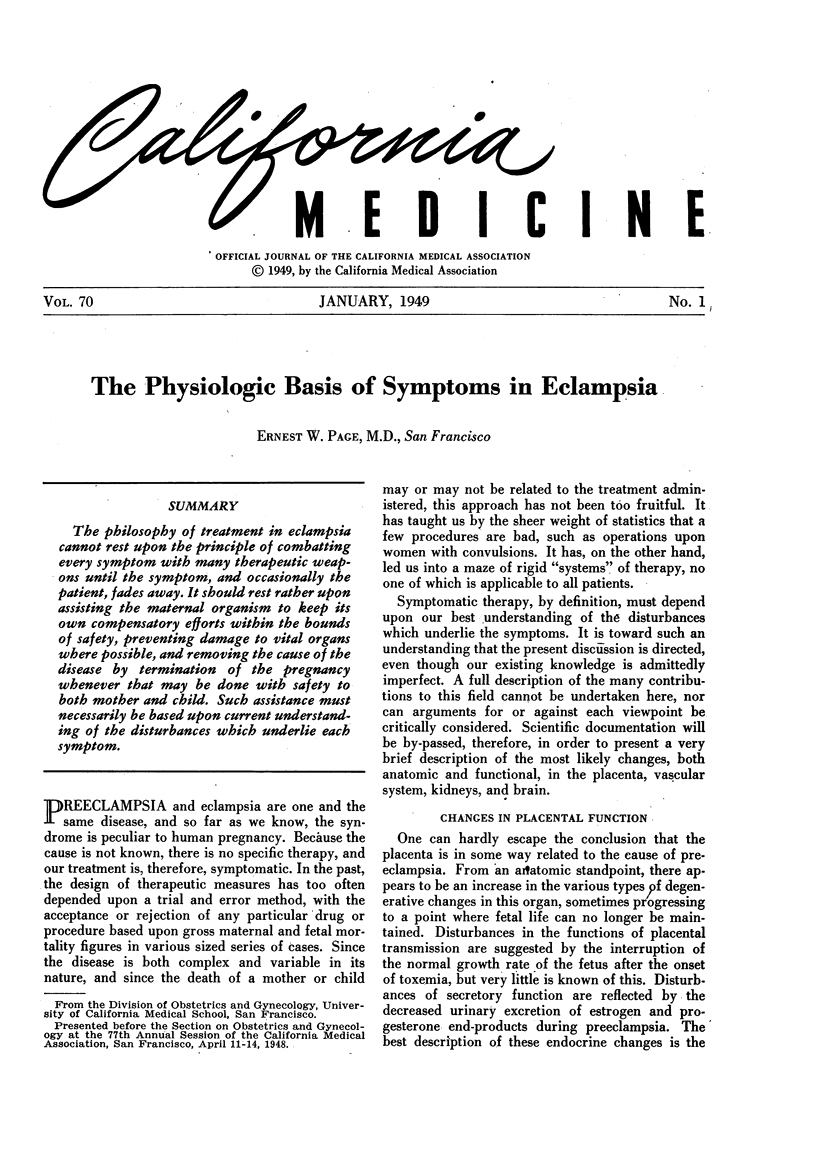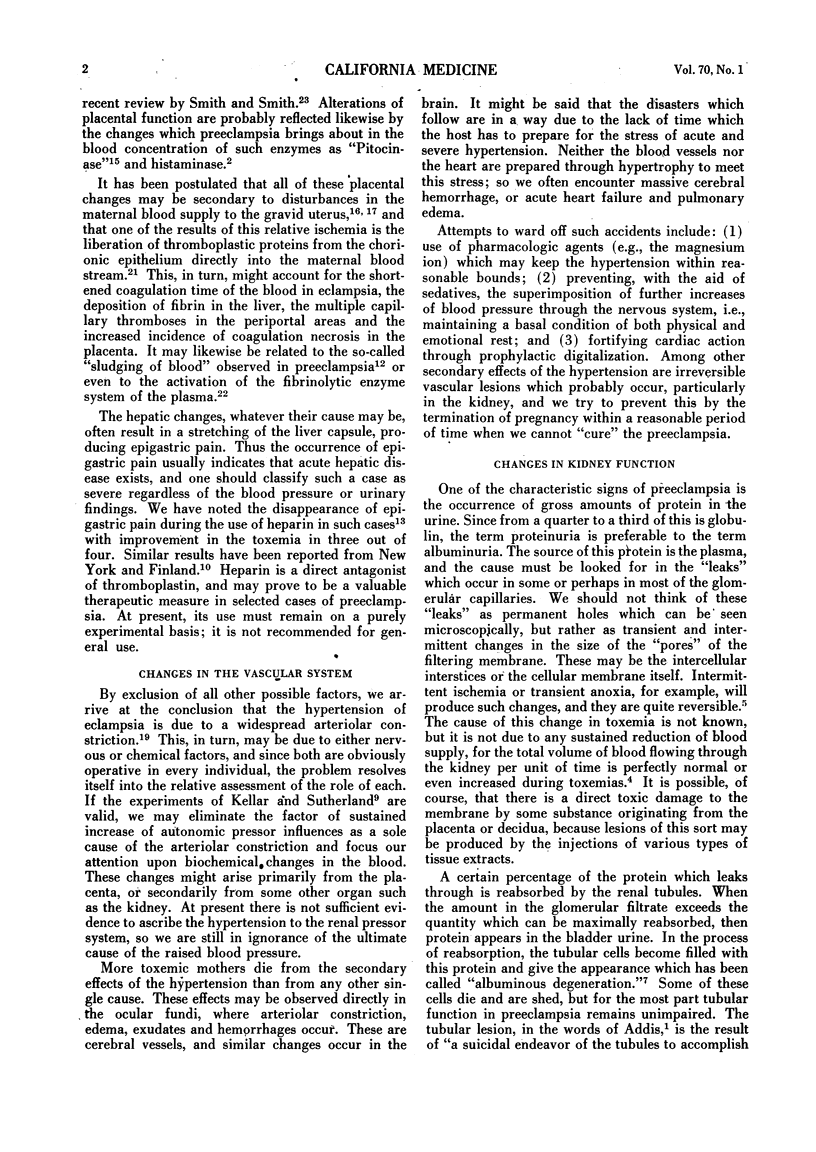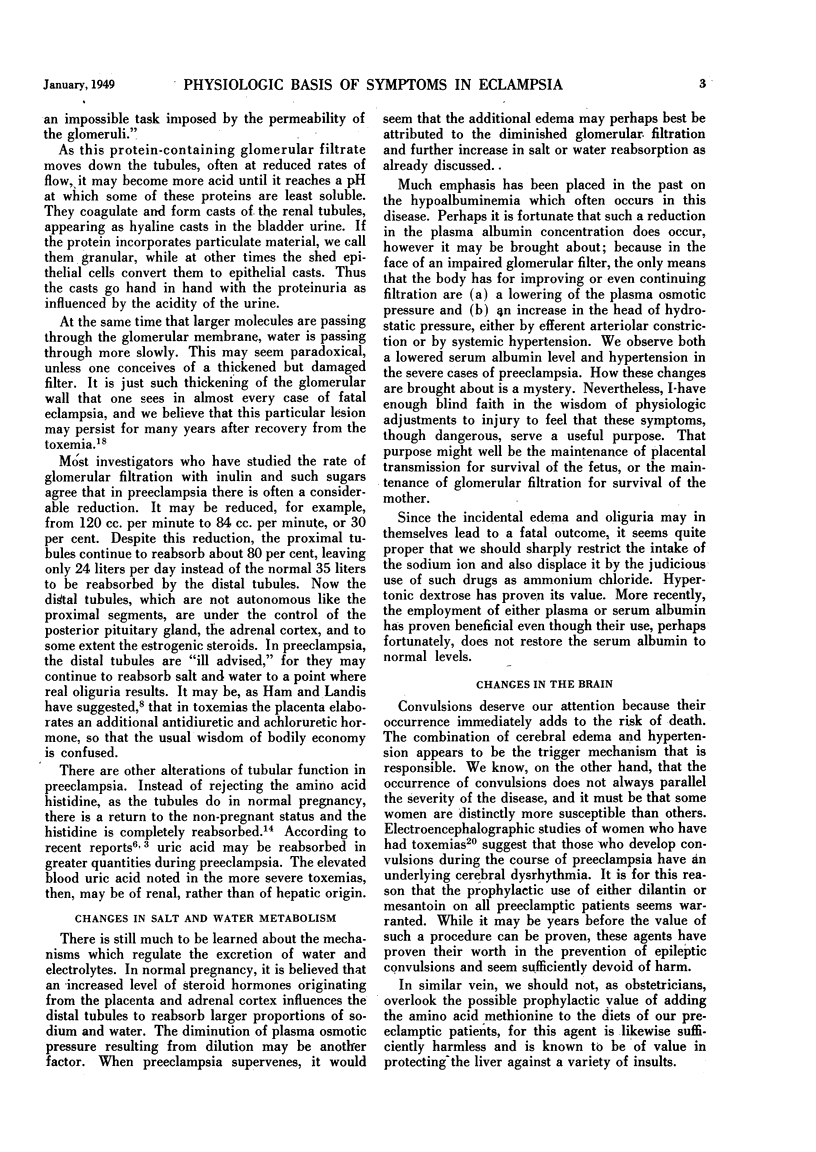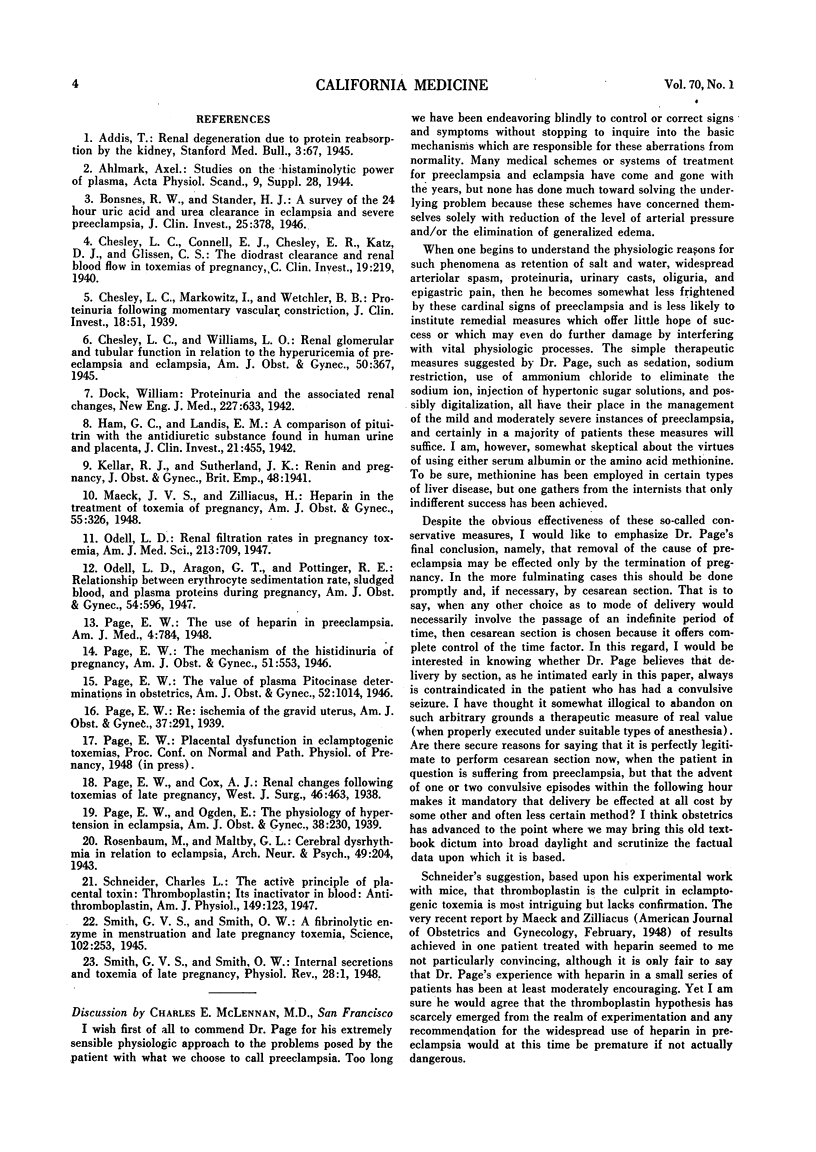Abstract
The philosophy of treatment in eclampsia cannot rest upon the principle of combatting every symptom with many therapeutic weapons until the symptom, and occasionally the patient, fades away. It should rest rather upon assisting the maternal organism to keep its own compensatory efforts within the bounds of safety, preventing damage to vital organs where possible, and removing the cause of the disease by termination of the pregnancy whenever that may be done with safety to both mother and child. Such assistance must necessarily be based upon current understanding of the disturbances which underlie each symptom.
Full text
PDF



Selected References
These references are in PubMed. This may not be the complete list of references from this article.
- Bonsnes R. W., Stander H. J. A SURVEY OF THE TWENTY-FOUR-HOUR URIC ACID AND UREA CLEARANCES IN ECLAMPSIA AND SEVERE PREECLAMPSIA. J Clin Invest. 1946 May;25(3):378–385. doi: 10.1172/JCI101718. [DOI] [PMC free article] [PubMed] [Google Scholar]
- Chesley L. C., Connell E. J., Chesley E. R., Katz J. D., Glissen C. S. THE DIODRAST CLEARANCE AND RENAL BLOOD FLOW IN TOXEMIAS OF PREGNANCY. J Clin Invest. 1940 Jan;19(1):219–224. doi: 10.1172/JCI101113. [DOI] [PMC free article] [PubMed] [Google Scholar]
- Chesley L. C., Markowitz I., Wetchler B. B. PROTEINURIA FOLLOWING MOMENTARY VASCULAR CONSTRICTION. J Clin Invest. 1939 Jan;18(1):51–58. doi: 10.1172/JCI101025. [DOI] [PMC free article] [PubMed] [Google Scholar]
- Ham G. C., Landis E. M. A COMPARISON OF PITUITRIN WITH THE ANTIDIURETIC SUBSTANCE FOUND IN HUMAN URINE AND PLACENTA. J Clin Invest. 1942 Jul;21(4):455–470. doi: 10.1172/JCI101322. [DOI] [PMC free article] [PubMed] [Google Scholar]


